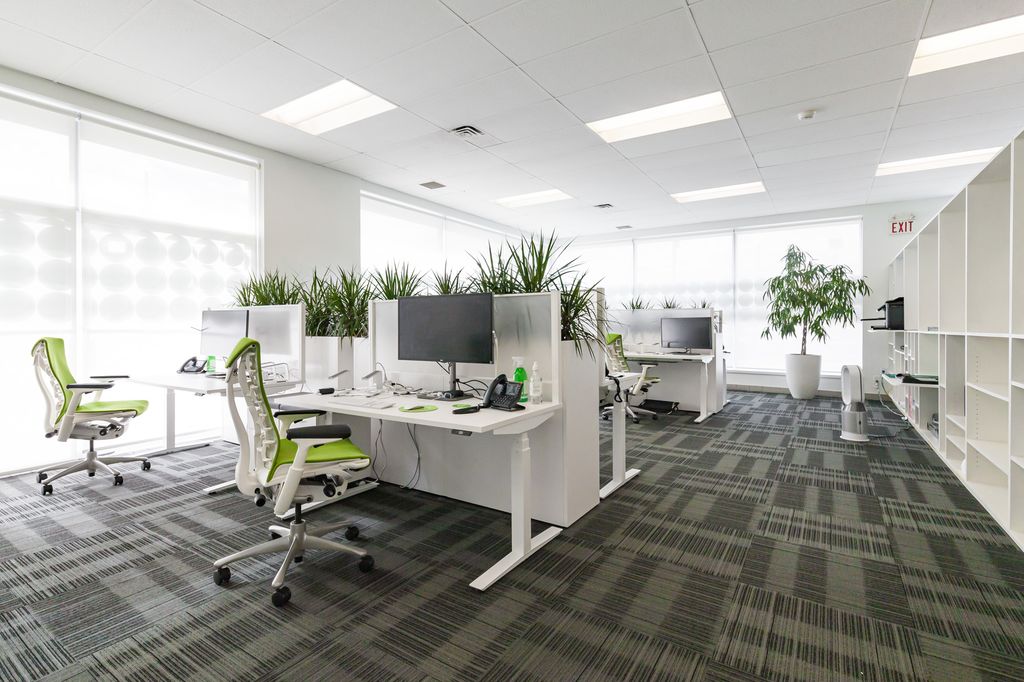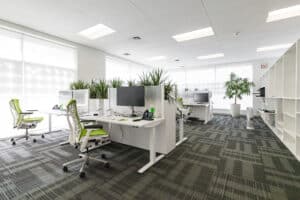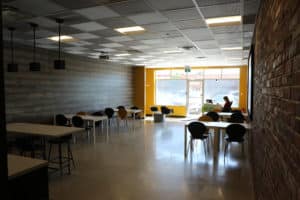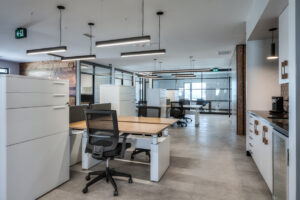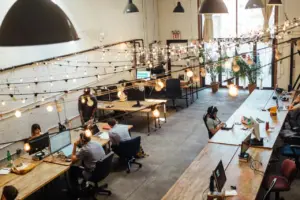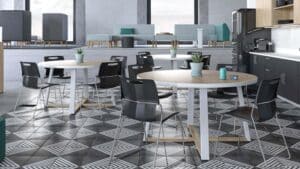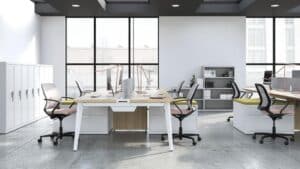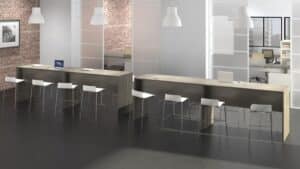Do you feel like your office design feels outdated or inefficient? Well, maybe it’s time for a revamp! A well-designed workspace can enhance productivity, boost employee morale, and reflect your company’s brand identity. However, taking on an office renovation is a major commitment in terms of time, money, and effort. To ensure a seamless process and achieve the best results, it’s crucial to hire the right professionals who understand both functionality and aesthetics.
At Studio Forma, we specialize in office interior design to create your ideal workspace. We believe a space that’s beautiful and efficient energizes and motivates the people who work within it. A thoughtfully designed office can foster collaboration, reduce stress, and maximize efficiency. Let us help you realize your vision and turn your office into a dynamic and inspiring environment.
Office Interior Designer vs. Architect: Key Differences
While architects focus on a building’s structure and external elements, interior designers are experts in space planning, layout, and finishes. Interior designers specialize in optimizing office interiors for functionality and aesthetics. They create detailed technical drawings, suggest layout improvements, and ensure seamless flow within the space.
Both architects and interior designers must understand building codes, client needs, and budget constraints. In Ontario and other provinces, both professions require licensing and registration. Interior designers must stay updated on layouts, ergonomics, and innovative solutions that enhance workplace efficiency.
For office renovations, an interior designer is often the best choice to reimagine and transform your workspace effectively. Whether you’re updating an open-plan office, creating collaborative areas, or redesigning executive spaces, an interior designer ensures that every square foot serves a purpose.
When Do You Need an Office Interior Designer?
If you’re planning a major office remodel, hiring an interior designer is essential. A licensed professional ensures your workspace is functional, accessible, and visually appealing. Interior designers also handle permits, regulatory requirements, and budgeting, making the renovation process stress-free.
From concept to completion, an experienced office interior designer will manage every aspect of your project, ensuring your space aligns with business goals and enhances productivity. Whether you are a startup designing your first office or a large corporation looking to modernize, working with a professional interior designer can make all the difference.
Investing in office interior design goes beyond aesthetics; it directly impacts employee well-being and operational efficiency. A cluttered, poorly designed office can lead to decreased motivation, increased stress, and even health issues like poor posture and eye strain. A well-planned space encourages engagement, collaboration, and a positive work culture.
The Interior Design Process
Interior design is a complex process that includes planning, site analysis, and collaboration with stakeholders. Whether redesigning a corporate office, coworking space, or conference room, interior designers follow key steps to bring your vision to life.
1. Assessing the Office Space
A well-designed office enhances productivity, collaboration, and employee well-being. Interior designers evaluate your current space and identify opportunities for better layout, efficient storage, and improved workflow.
This phase includes understanding your company’s work culture and how employees interact within the space. Do they need more collaborative zones? Are private offices necessary? How can the workspace balance openness with the need for focus? Interior designers analyze traffic flow, furniture placement, and overall spatial dynamics to make data-driven design decisions.
2. Balancing Aesthetics and Functionality
An office interior should be both beautiful and practical. Interior designers consider lighting, acoustics, and furniture placement to create a workspace that fosters efficiency and creativity. A well-balanced design integrates ergonomic furniture, appropriate lighting, and thoughtful color schemes to create a comfortable environment.
Proper lighting, for example, is crucial in office interior design. Poor lighting can lead to eye strain and fatigue, while the right balance of natural and artificial lighting can boost concentration and mood. Similarly, soundproofing solutions can minimize distractions in open-office layouts, ensuring a quieter, more productive workspace.
3. Developing a Cohesive Design Concept
The design concept serves as the foundation for your new workspace. Interior designers develop themes that align with your brand identity, ensuring consistency across all design elements. From selecting the right color palette to choosing furniture and decor that reflect company values, every detail contributes to a unified and professional look.
A modern tech startup, for example, may opt for an open, flexible workspace with casual breakout areas, while a law firm might prioritize private offices with elegant, classic furnishings. Interior designers tailor each project to the specific needs of the business.
4. Meeting Client Needs with Precision
Every business has unique workspace requirements. Interior designers work closely with clients to customize layouts, select furnishings, and incorporate branding elements that enhance company culture.
A company’s work processes should dictate the layout of the space. If teams frequently collaborate, an open-plan setting with shared desks and informal meeting spaces might be ideal. If employees require deep focus, designated quiet zones or enclosed offices may be necessary. Interior designers carefully assess these needs to create a workspace that fosters productivity and job satisfaction.
5. Managing Project Execution
Beyond design, office interior designers play a crucial role in managing the project timeline, coordinating with contractors, and overseeing installations. They ensure that all elements come together seamlessly, from furniture delivery to lighting installation, making sure the office is move-in ready without delays or unexpected costs.
An interior designer also troubleshoots challenges that may arise during construction. If a certain material becomes unavailable, they find alternatives that align with the design concept. Their expertise in sourcing high-quality materials within budget ensures the best value for your investment.
Key Takeaways
· Office interior design enhances productivity, employee morale, and brand identity.
· Interior designers specialize in space planning, layout, and functionality.
· Hiring an office interior designer ensures compliance with building codes and ergonomic best practices.
· A well-planned office space fosters collaboration, reduces stress, and boosts efficiency.
· Studio Forma specializes in commercial interior design to create inspiring workspaces.
Studio Forma: Your Partner in Office Interior Design
At Studio Forma, we understand that a great office interior design is key to business success. Our team specializes in commercial interior design, creating workspaces that inspire and support productivity.
We combine expertise in space planning, materials selection, and project management to deliver outstanding results. Whether you’re looking for a modern, collaborative office or a sophisticated executive space, we’ll bring your vision to life.
Our team is passionate about optimizing office spaces to improve workflow, enhance employee well-being, and create a strong brand presence. From selecting the perfect ergonomic chairs to designing meeting rooms that encourage innovation, we ensure every detail contributes to an outstanding work environment.
If you’re ready to transform your office with expert interior design, contact Studio Forma today. Let’s create a workspace that reflects your brand and enhances efficiency. Your dream office is just one design consultation away!
Frequently Asked Questions (FAQ):
What is the main role of an office interior designer?
An office interior designer optimizes workspace layouts, selects appropriate furnishings, and ensures the environment supports productivity and employee well-being.
How does office interior design impact employee performance?
A well-designed office improves focus, reduces stress, and enhances collaboration, leading to increased productivity and job satisfaction.
What are some key elements of effective office interior design?
Key elements include ergonomic furniture, efficient lighting, flexible workspaces, soundproofing, and branding integration.
